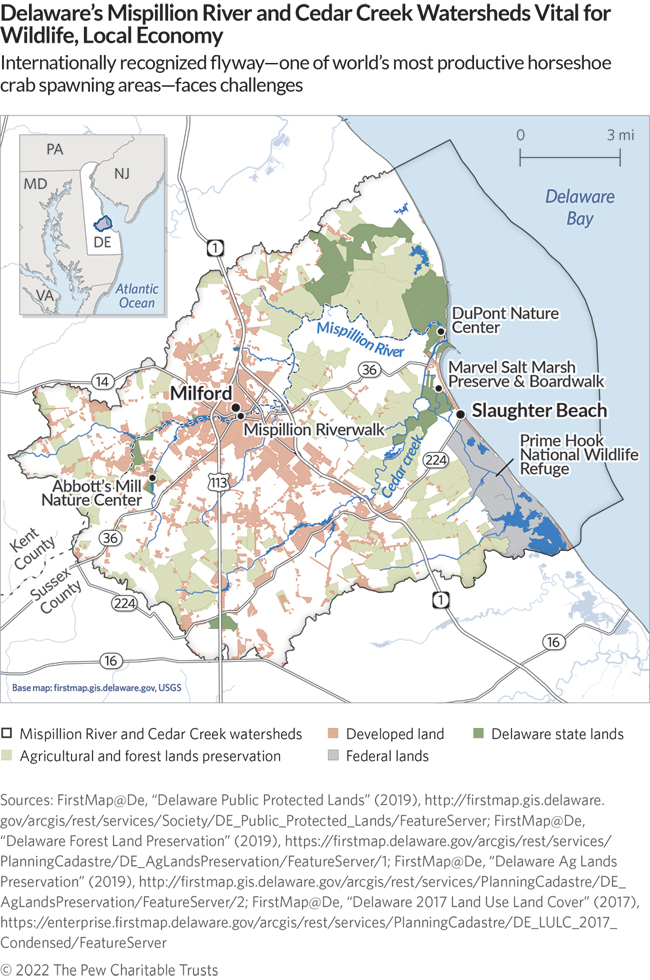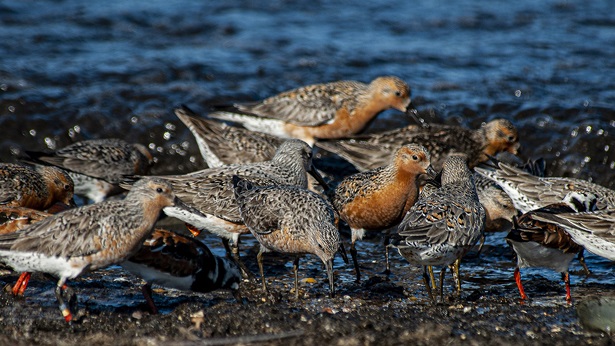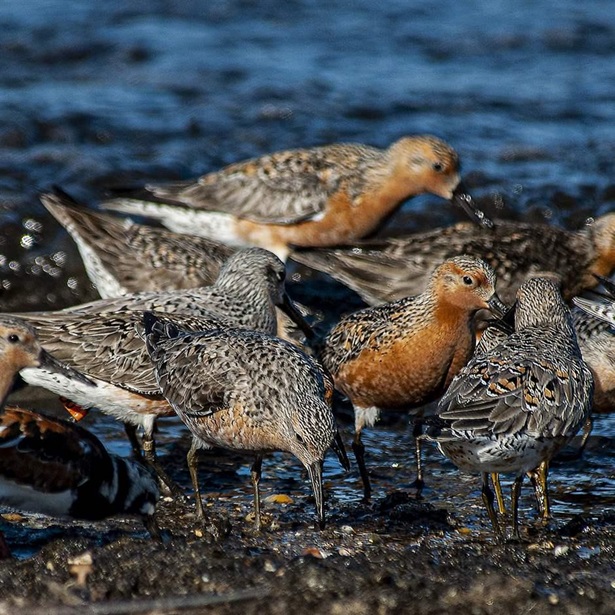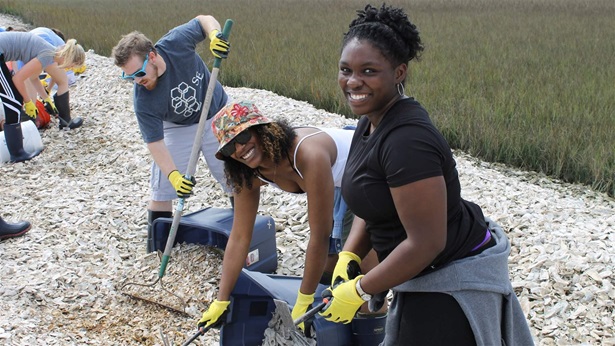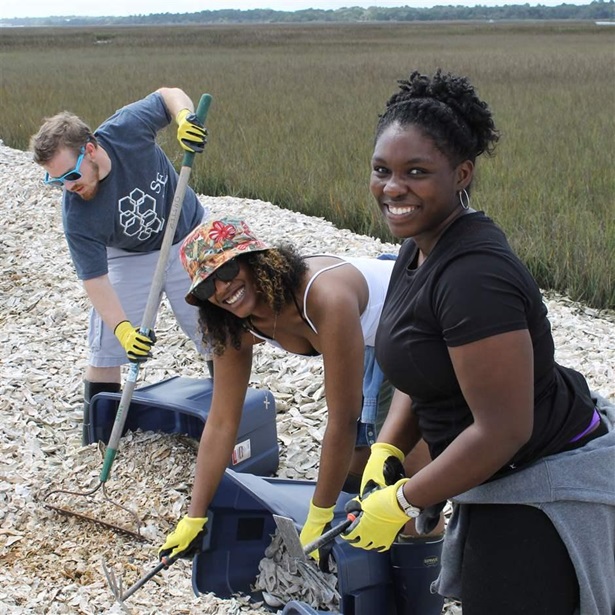Two Delaware Watersheds Are Valued at Millions of Dollars Annually, Research Finds
Assessment is first step in ecotourism- and nature-based study to boost both economic and coastal resilience of Slaughter Beach and Milford

Editor’s note: The map on this page was updated on Oct. 27, 2022, to correctly label Delaware Bay.
Delaware’s Mispillion River and Cedar Creek watersheds—lands that separate waters flowing into different rivers, basins, or the ocean—have some of the last remaining large tracts of undisturbed land in the state. Because the area is under pressure from coastal development, and increasingly strong storms, a broad coalition is working to establish a nature-based investment strategy to increase economic opportunity while simultaneously conserving coastal habitats and boosting the communities’ resilience to sea level rise.
A report on the first phase of this work, commissioned by The Pew Charitable Trusts, was released July 21 by the Environmental Finance Center (EFC) at the University of Maryland.
“This project helps communicate the benefits nature provides to the economies and people living in and visiting the communities profiled,” EFC wrote in the report. “The values help support broader statewide planning to implement, invest in, and enhance nature-based solutions and ecotourism opportunities in the city of Milford and town of Slaughter Beach, their respective counties of Kent and Sussex, and potentially other Bayshore towns.”
The report did not estimate the overall economic impact that the area’s natural resources generate, but determined that “the estimated value for leisure, recreation, and wildlife viewing alone is potentially substantial, at over several million dollars per year.” The value of the historic commercial shipping industry—based in the Mispillion Harbor and commemorated in sites such as Vinyard Shipyard—is also significant.
The watersheds provide crucial habitat for a range of marine life and storm protection for surrounding communities and feature largely undisturbed expanses that offer extensive recreational and ecotourism opportunities.
Researchers also used a technique called an ecosystem service valuation that estimates the intrinsic and nonmarket value people place on nature. This is not always captured by typical economic indicators such as spending or revenue, but economists agree it is important to include when describing what people feel nature is worth to them. This work yielded annual estimates that would, over decades, compound to many millions of dollars of benefit from nature in the watersheds.
For example, researchers estimated that the recreation- and tourist-centered Abbott's Mill Nature Center—which offers hiking, wildlife viewing, and family-centered activities—is valued at between $313,000 and $6.3 million, and that leisure activities at Mispillion Riverwalk Greenway have values of $465,000 to $1.19 million. These ranges are so wide because recreational activities may have vastly different ecosystem service benefits associated with them.
The Marvel Saltmarsh Preserve Boardwalk, which is popular for shorebird viewing, was valued at $428,000 for daytrips during 2020, researchers found, which was almost certainly depressed by lower-than-normal visitation because of the COVID-19 pandemic. In addition, a preliminary analysis of flood insurance claims found that Slaughter Beach’s and Milford’s salt marshes and wetlands provide storm protection valued at between $7,800 and $125,200 per extreme weather event.
The report also projected that in 2021, recreational values from Mispillion Harbor Reserve, DuPont Nature Center, and Slaughter Beach, which support wildlife, shorebird, and horseshoe crab viewing, and bay beach recreation would top $1 million combined. Specifically, researchers estimated values of $574,000 to $1.15 million from daytrips and overnight stays for shorebird viewing, and $458,000 for Slaughter Beach recreational activities.
The watersheds are directly or indirectly responsible for sustaining 1,251 jobs in the region, across 83 businesses that are dominated by hospitality and recreation (restaurants, bars, hotels, campgrounds, a zoo, and an aquarium) but also include other marine- and coast-dependent industries, such as shipping and warehousing.
Economic opportunities and environmental threats prompted study
The combination of the area’s valuable natural resources and growing threats to the ecosystems prompted the assessment, which is funded and supported by a broad coalition—the Waterways Infrastructure and Investment Network (WIIN)—that includes Pew. WIIN is an offshoot of the larger Delaware Resilient and Sustainable Communities League (RASCL), a consortium of 22 organizations, including nonprofits, academic institutions, and state agencies, dedicated to helping Delaware communities improve how they respond to changing environmental conditions.
Other entities involved with the work include: the Delaware Department of Natural Resources and Environmental Control, the Delaware Nature Society, Delaware Sea Grant, Kent County, Milford, the Partnership for the Delaware Estuary, Slaughter Beach, Sussex County, and the EFC.
Next: Valuing habitats in land-use decisions
At 60 feet, Delaware has the lowest mean elevation of any U.S. state, and areas within it experience a rate of sea level rise twice the international average, according to Delaware Sea Grant. So, for the next phase of this project, researchers will identify community assets and natural resources at risk of flooding, sea level rise, and changes in land use. This phase will be funded largely by a competitive grant recently awarded to the coalition by the National Fish and Wildlife Foundation’s National Coastal Resilience Fund.
In this phase of the assessment, researchers said they wouldn’t attempt to establish the precise value that a healthy coastline provides to the area but noted, “The monetary value of storm protection by marshes and barrier beaches is increasingly urgent to quantify. Notably, the increasing intensity of storms will make this protective value essential in planning future land use.” This report did add that healthy salt marsh beds and wetlands generally reduce the cost of damage that communities sustain from weather events by about 10%.
Pew commends the work to date on this project, which is the first step in demonstrating that evidence-based research can help identify ways to improve the economic resilience of coastal communities while preserving their ecological value and slowing the effects of climate change. Our hope is that this work will serve as a model for other coastal communities interested in conserving their vulnerable yet valuable habitats, while also enhancing the economic benefits that flow from them.
Joseph Gordon is a director and Caitlin Lang is a field operations manager with The Pew Charitable Trusts’ conserving marine life in the U.S. project.
